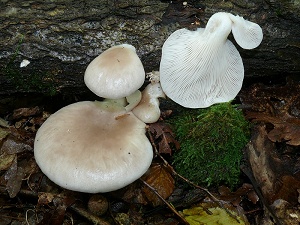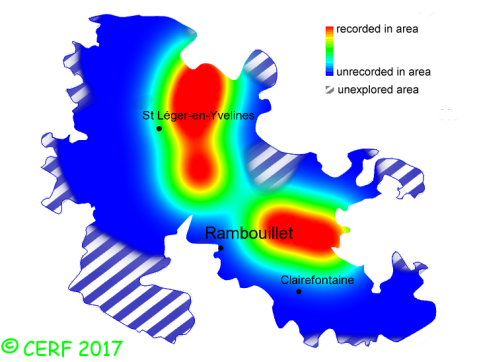| Pleurotus ostreatus (Jacq.:Fr.) P. Kumm. |
|
|
|
|
|
|
The cap is flesh-grey, slate-grey to blue-grey, oval, oyster-shaped, convex then expanded, sometimes finally depressed; its margin is smooth, inrolled, then wavy or split. The cap surface is smooth, silky, shiny to matt. The stem is lateral or off-centred, white, short or absent, without ring. The flesh is white, unchanging; its taste is pleasant; the odour is pleasant, of mushroom; its texture is fibrous. The gills are white then ochre-grey, decurrent, loosely crowded . The spore print is white. This species is saprophytic, sometimes parasitic. It grows on dead wood, in tufts, on dead (sometimes live) deciduous wood, on beech wood, sometimes also on other deciduous trees. The fruiting period takes place from January to March.
Chemical tests : none. Distinctive features : grey to ochre-brown cap, with a lateral or off-centre stem, white, short or missing, and decurrent white gills; in dense tufts on deciduous wood; late in the season Pleurotus ostreatus is quite rare and localised in the forest of Rambouillet, and is frequent, more generally speaking . | ||
|
page updated on 14/01/18

